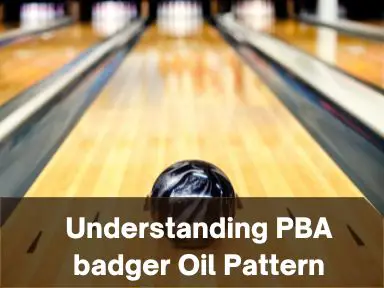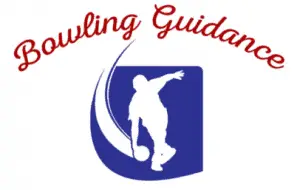
Out of all the PBA Animal patterns, the Badger is the longest one out there. So you must be wondering if playing on this pattern is going to be very difficult, right? Well, the PBA Badger oil pattern will prove you wrong. It is a common misconception among bowlers that a longer pattern means it is harder. But no! Despite the heavy oil volume and increased length, you will do great with the help of your accuracy and consistency. As it is one of the most popular bowling oil patterns used in the PBA tournaments, I believe it’s a great time to learn more about it. So let’s study this pattern in-depth, shall we?
What is the PBA Badger oil pattern?
The Professional Bowling Association (PBA) accredited Badger oil pattern stretches to 52 feet, making it the longest bowling pattern. Previously, the Badger had an extremely high concentration of oil (30.15 ml). The new upgrade has lowered the Total Volume Oil to 24.95 mL. Now, the pattern is much more playable than it was before. But here’s the tricky part. The Forward oil total is 21.05 mL and the Reserve oil total is only 3.9 mL.
You can tell by the specifications that the lane is going to play slick. Although the lane conditioner and its transfer type are customizable, most houses are going to follow the official pattern sheet. So you will find 50 uL of oil on each pattern board. The Total Boards Crossed in this oil pattern are 499 Boards (421 Boards- Forward and 78 Boards- Reverse).
No cap, the PBA Badger oil pattern is indeed very challenging. You are gonna have to follow some specific tactics if you want to score a decent average. Even an advanced or pro-bowler struggles to score a 200. If you have already played on this pattern and had a nice average, consider yourself blessed.
How to attack the PBA Badger oil pattern?
Write it down- “Straighter is Greater”. This should be your only motto when you play on the 52 feet Badger oil pattern. This pattern is the ultimate test for a straight shooter. Forget making any angular hook on this pattern. The long heavy oil will prevent it from happening.
To clarify, first use the ‘Rule of 31’ as a smart bowler should do. Let’s subtract 31 from the pattern length which is 52. That gives you 52-31 = 21. This is clearly indicating you that you have to play from the middle part of the lane. However, strictly staying in the middle part of the lane would be stupid because it won’t hit the pocket properly. So take advantage of the flexibility you will have. You should move a little toward the third arrow, a couple of boards right (right-handers) or left (left-handers) of the 3 pin.
Long patterns like the PBA Badger usually prevent you from creating angles despite the type of your bowling ball. This is because there isn’t enough lane after the pattern ends for the ball to make its move toward the pin. But the good news is that after a few games, the lane will open up more.
Use a nice controllable ball that can get into a roll at the end of the pattern. When you first start, you gotta keep the pocket in front of you and play a little tighter. It is also imperative to keep your angles in front of you as you release the ball. No matter where you place your feet, you’ll want to make sure your ball exits the pattern between 15-18 board to not give away the pocket.
According to PBA, you will experience a medium-scoring pace on this pattern. But how can you turn that around? Well, always be prepared to play straight while keeping your breakpoint closer to the pocket. You should expect a smooth ball read through the front and mid lane. Make sure your ball isn’t chewing up the oil and you can still control the mid lane.
When you’re rolling on a 52 feet pattern, the breakpoint of your bowling ball basically has to be dead in front of the pocket. It might have to play very deep just like you would on patterns like PBA Shark and Mexico City. Based on which side you play, you’ll see different scenarios on this pattern.
When you play straight up your target board close to the pocket and unwillingly miss, what will happen? Simple answer, if you miss right, it’ll be a washout or left side picket fence. If you miss left, it’ll also be a washout or some bad splits.
So what if you play a fallback? In that case, if you miss right, you’ll see the left side picket fence, but your chances of washout will be minimized. This is because your ball is going to move across the pocket. Oppositely, if you miss left, you might hit Brooklyns, or leave some simple right side leaves.
Which bowling ball is best for this pattern?
So how do you save yourself from the Badger’s attack? Use the right bowling ball that has at least 1000 Grit surface.
You should go for a bowling ball with a symmetrical core with a matte/sanded coverstock. I would suggest a medium-powered bowling ball will do you best. If you want, you can use a strong ball but it will be too early on the lane. Trust me, you don’t want that earlier motion practically. Of course, unless a stronger ball is actually working for you, then yes, sure. Just make sure you use something that conserves energy. A weaker bowling ball tends to do that better.
If you’re planning to use a strong ball, make sure it has plenty of surfaces. A great option for that ball would be the Motiv Jackal. If you can’t get your hands on that, a good substitute is the Motiv Trident Odyssey. The Storm Hy-Road Nano, as well as the Roto Grip Haywire, will perform stunningly on this tough oil pattern. Another great alternative is the Storm Sure Lock bowling ball. Remember, to go for a higher grit bowling ball as the lane transitions.
Conclusion
That’s the information I had regarding the PBA Badger oil pattern. Badger will test you on every level of your game. The key is to achieve finesse, remain patient, control the speed and focus on repeating shots to hit your target. Don’t overthink and keep on practicing. With the right bowling ball, nothing can stop you from winning. So if you have a challenge coming, good luck with that!

